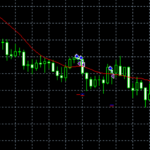How to use Stop Losses

Every forex trader likes to think he is able to think swiftly on his feet and respond to any which way the market turns. However the truth is that when caught with an unexpected market movement, the initial gut instinct is not always the right one. In a world where one bad decision can mean the end of a trader, it is essential to have a strategy for when the deals don’t go as planned. And have no doubts, this will happen. Frequently.
Stop losses are one way of protecting the capital in the account to ensure there is always enough left to continue trading. It is essentially just another name for a risk management system where the trader pre-determines exit levels which when hit mean the deal is closed, regardless of the dealer`s position.
Some dealer’s dislike the concept of stop losses as they feel they are a reflection on a dealer’s ability to judge when to exit the market and restrict trading. However, when the market is moving against a deal, it can be very tempting to pursue a position, in the vain hope that the odds will eventually turn. However, by the time they do, all of the capital funds may have been obliterated meaning the trader is unable to continue.
Stop loss level
Every trader will decide at what point they will set up their stop losses but the recommended value is around 1-2% below the support level. There is little point setting stop losses just below the support level as it is expected that this level would be tested with minor break throughs, before rising back above the level again. Setting the stop loss level too low could result in deals being closed too early, when support levels are merely being tested by the market and not actually broken.
Trailing stops
Trailing stop losses are possibly one of the loosest types of orders to place, with no set numerical value specified. Trailing losses follow the market with the stop loss stepping in when the market dips below a certain percentage, but allows for fluctuations.
Slippage
However, when stop loss orders are executed, the price is not usually exact. A broker may not be able to exit the market until the next available price, meaning there may be a slight difference in the actual close and the stop loss order. This difference is called slippage. There is a way to prevent this and this is by using a guaranteed stop loss order. This means any deal will be closed at the exact price the stop loss order specifies but usually command an additional fee from the broker.
Time based stop loss
An alternative approach is time-based stop losses. This type of trading very much relies on the good judgement of the trader and perhaps is not the easiest approach for beginners. A trader decides beforehand on the exact amount of time he will stay in the deal for and exits at exactly that time, regardless of how the deal is going. The skill lies in finding the right trade to enter sat the right time so that the market goes in the right direction to make the gains.
Regardless of how many traders feel about using stop losses, they are an essential part of forex trading and will help protect capital from being wiped out.










